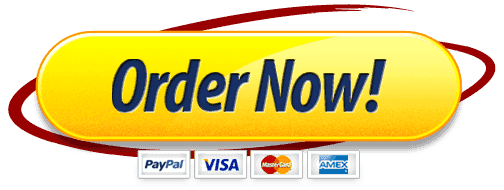- Premium Academic Help From Professionals
- +1 757 528 8682
- support@standardwriter.com
Identifying and Building Personal Strengths Essay
Identifying and Building Personal Strengths Essay
|
Order Number |
636738393092 |
|
Type of Project |
ESSAY |
|
Writer Level |
PHD VERIFIED |
|
Format |
APA |
|
Academic Sources |
10 |
|
Page Count |
3-12 PAGES |
Instructions/Descriptions
Identifying and Building Personal Strengths Essay
Reflected Best Self Exercise Distribution Version
Developed by Robert E. Quinn, Jane E. Dutton, and Gretchen M. Spreitzer
This exercise is a tool to help you identify and build your strengths. The overall result provides a strength-based portrait to help you discover who you are at your best and what you can become in your career and in your life.
The framework for the RBS exercise comes from Positive Organizational Scholarship. Research from this area indicates that people tend to receive and remember criticism more often than praise. While criticism tends to make people defensive and less likely to change, praise produces confidence and the desire to improve
To help compose a self-portrait focused on your strengths, it is important to draw on the perceptions of significant others who have unique and valuable insights into the ways you add value and make a contribution. The Reflected Best Self (RBS) exercise creates an opportunity for you to receive feedback regarding who you are when you are at your best.
In this exercise, you will obtain data from other people to create a more extensive reflected best-self-portrait. You will obtain short descriptions of who you are and what you do when you are at your very best from a diverse array of significant people in your life. From this feedback, you will learn important things about yourself that you may have never realized before.
The goal of this feedback exercise is five-fold:
- To generate awareness of how others see you when you are at your best
- To enhance understanding about what kinds of work situations bring out the best in you
- To create personal and career development plans and actions, based upon the reflections that your reflected best-self feedback generates
- To provide a tool for future times when you may be discouraged and need to get back on track
At the end of every semester in which I assign this project, several students thank me for the insights they obtained from the assignment.
Directions
In this exercise, you will develop a reflected best-self-portrait based on feedback from an array of individuals who know you well. There are several steps to follow:
Step 1: Identify Respondents
Identify 10-15 people who know you well. These should include (1) colleagues (former or current; (2) friends (old or recent), (3) family members, (4) bosses or managers (former of current), (5) teachers or professors (former or current) and anyone else who has had extended contact with you.
Consider people who have known you at different stages of your life, and in different domains. If you are unsure whether someone is appropriate, please ask ME. Think about who will give you their honest opinion.
The more diverse the group, the better. Also, realize that due to time constraints, everyone will not be able to respond. Ideally, you need 8-10 responses to complete this part of the assignment, so ask enough people to ensure 8-10 responses. If this is a problem for you, let me know as soon as possible.
Step 2: Compose a Feedback Request Letter
Compose a feedback request letter (see example below) and e-mail it to the 10-15 people identified in Step 1. Although this request may seem awkward or difficult for you, participants have found this assessment to be a profound learning activity, and that others are quite willing to assist with this exercise.
Sample E-mail Request for Feedback
As part of my Organizational Behavior Course at Baruch College, I am constructing a profile of the ways that I add value and make a contribution. I have been asked to contact a variety of people who know me well and ask that each person provide me with answers to three questions and as many examples as possible to support those responses. All questions ask you to describe me when I was at my best. I would like to invite you to help me with this exercise.
I appreciate you taking the time to do this for me. This will require you to think about your interactions with me and to identify those incidents/behaviors when, in your eyes, I was at my very best. In writing, please be sure to provide examples so I can understand the situation and the characteristics you are describing.
Your feedback to me:
Please provide me with three examples of how I add value by completing the following statements.
- One of your greatest strengths is …
For example, I think of the time that …
- What I value most in my relationship with you is …
For example, I think of the time that …
- One thing that I think is unique about you (in a good way) is …
For example, I think of the time that …
Please e-mail your responses to me by (insert date). Thank you very much for your cooperation.
Step 3: Analyze Feedback
Read all of your feedback and take notes on the key insights. Look for commonalities across the responses. Create themes where you find a commonality and link the several examples to it. Present these in a table such as the one below: These themes are only examples. You should choose your own themes based on the examples you’ve received.
| Commonality/Theme
1. Creativity |
Examples Given
1. Innovative builder of new projects for education. 2. Find new solutions for old problems in department relationships with my boss. 3. Guided the organization in transforming itself. |
My Interpretation
My ideas tend to be bold and creative. I am an innovative builder of the new. I tend to bring a new vision to the old. |
| 2. Ability to Listen | 1. Asked for clarification of unclear instructions when tasked with an important project.
2. Paid careful attention at staff meetings. |
|
| 3. Analytical Ability | 1. Identified and carefully collected and analyzed the data and information needed to solve important problems.
2. Took a logical and rational approach to decision-making |
|
| 4. Teamwork | 1.Shared knowledge and other resources with other team members.
2. Instituted team traditions that helped foster good relationships within the team. |
Step 4: Compose the Reflected Best Self-Portrait
Create a written portrait of your best self that captures the wisdom in your data. Your portrait should be in three paragraphs with a total of about 200 words. Make sure to start the portrait with” When I am at my best”.
Here is an illustration of a reflected best-self-portrait:
When I am at my best, I tend to be creative. I am enthusiastic about ideas and I craft bold visions. I am an innovative builder who perseveres in the pursuit of the new. I do not waste energy thinking about missed opportunities or past failures nor do I take on the negative energy of the insecure or worry about critics. I stay centered and focused on what is possible and important.
I use frameworks to help me make sense of complex issues. I can see disparate ideas and integrate them through “yes and” thinking, so I make points others do not readily see. In doing so, I frame experiences in compelling and engaging ways. I paint visions and provide new ways for people to see. I use metaphors and stories to do this. I find the stories in everyday experiences, and people find it easy to understand them. The new images that follow help people to take action.
In helping others, I try to empathize with them and understand their needs. I give them my attention and energy but I allow them to be in charge. In exercising influence, I try to enroll people, not force them, in new directions. I invite people to work with me. I use dialogue to help people surface their ideas, and then I weave them together with others until we create knowledge in real time.
I ignore symptoms and focus on the deep causes. I help people and groups surface the darkest realities and the most painful conflicts. From these emergent tensions comes the energy for transformation. I liberate people from their fears and help them embrace new paths. In all of this I try to model the message of integrity, growth, and transformation.
Step 5:
Submit your Reflected Best Self-Portrait to me by email, together with a copy of each of the original email responses and the nature of your relationship with each respondent.



